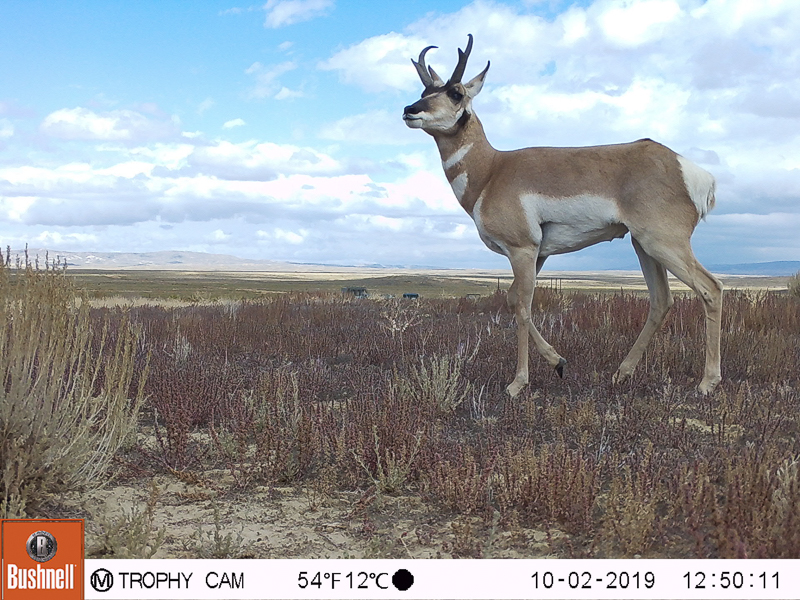SNAPSHOT USA: First-ever nationwide mammal survey published
For immediate release ‐ June 09, 2021
Contact: Jon Pishney, 919.707.8083. Images available upon request
 Pronghorn (Antilocapra americana) enjoys the sun in the snowy hills of southern Wyoming, contributed by Jesse Alston, University of Wyoming.
Pronghorn (Antilocapra americana) enjoys the sun in the snowy hills of southern Wyoming, contributed by Jesse Alston, University of Wyoming.
[RALEIGH, N.C.] – How are the squirrels doing this year? The bears? The armadillos? How would you know? A new paper published June 8 sets up the framework for answering these questions across the United States by releasing the data from the first national mammal survey made up of 1,509 motion-activated camera traps from 110 sites located across all 50 states.
Unlike birds, which have multiple large-scale monitoring programs, there has been no standard way to monitor mammal populations at a national scale. To address this challenge, scientists from the North Carolina Museum of Natural Sciences and the Smithsonian Conservation Biology Institute recently collaborated with more than 150 scientists on the first-ever nationwide wildlife survey, called Snapshot USA. “Our goal was to provide a space for researchers from all 50 states to contribute a subset of their data to a broader initiative to maximize our coverage of the country and better understand drivers of mammal distributions to best inform conservation as rapidly as possible,” said the Museum’s Curator of Mammalogy Michael Cove, lead author of the new paper.
For two months in fall 2019 researchers collected more than 166,000 images of 83 different mammal species. White-tailed deer were the most common species detected (34,000+ times at 1,033 sites), followed by eastern gray squirrels and raccoons. Pygmy rabbits, mountain beavers, hog-nosed skunks and marsh rabbits were among the least common mammals photographed. Yet, the overall detection winner was the coyote, which was detected in all 49 continental states — they have not made it to Hawaii yet. All the data are archived at the Smithsonian Institution’s eMammal database and published as part of the new paper.
In an interesting twist, developed areas tended to have the highest overall mammal detections, with three of the top five sites for total mammal activity being urban — Urbana, IL.; Baltimore, MD.; and Washington, D.C. “These new data show that the urban mammal paradox, with more animals actually living close to people, is not just an isolated phenomenon,” said coauthor Roland Kays, a scientist at the museum and at NC State University.
When comparing particular species across the country, North Carolina stood out for being in the “Top 10” for the relative abundance of black bears (#3 Dare County, #4 Craven County, #7 Pender County, #8 Haywood County); bobcats (#5 Dare County); coyotes (#8 Haywood County); white-tailed deer (#5 Surrey County, #9 Alamance County, #10 Moore County); and turkeys (#8 Craven County, #9 Burke County and #10 Moore County). Nationally, ranking of top sites for select mammal species can be found here.
The research results appeared June 8 in Ecology, a publication of the Ecological Society of America, the nation’s largest organization of professional ecologists. The publication makes the 2019 survey data available online for anyone to use for research questions, such as the evaluation of changes in animal populations over time or informing conservation strategies for threatened and endangered species. “This project involved a remarkable level of cooperation and data sharing that will have to be the standard going forward to adequately monitor our valuable wildlife resources at the national scale,” adds William McShea of the Smithsonian Conservation Biology Institute.
The scientists repeated the survey in fall 2020 likely providing insights on the effects of the COVID-19 pandemic on wildlife distributions and habitat use — resulting data will be available as the eMammal database is updated in 2021.

